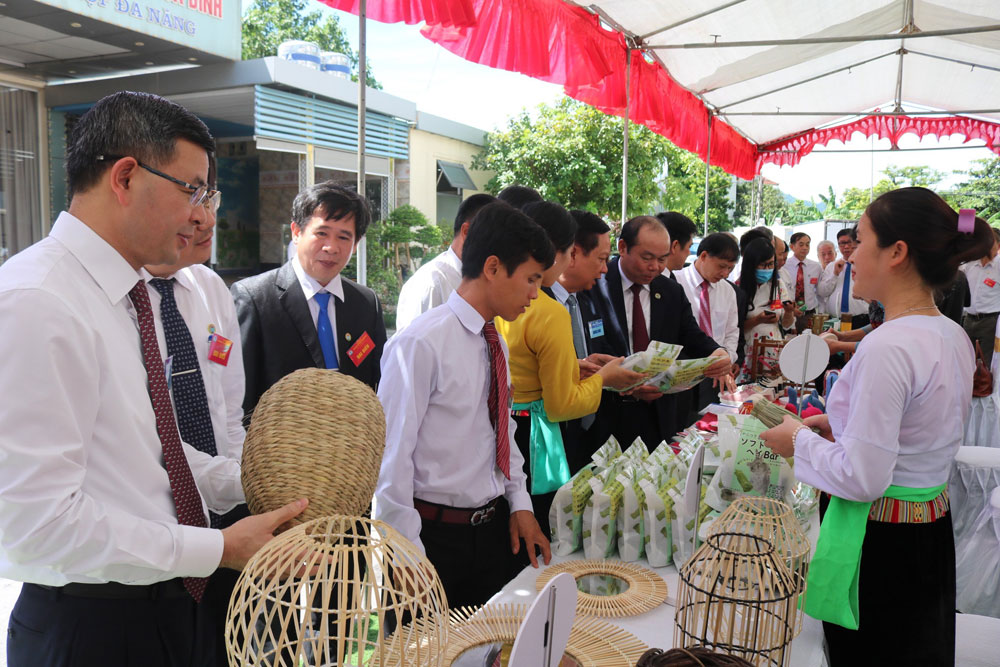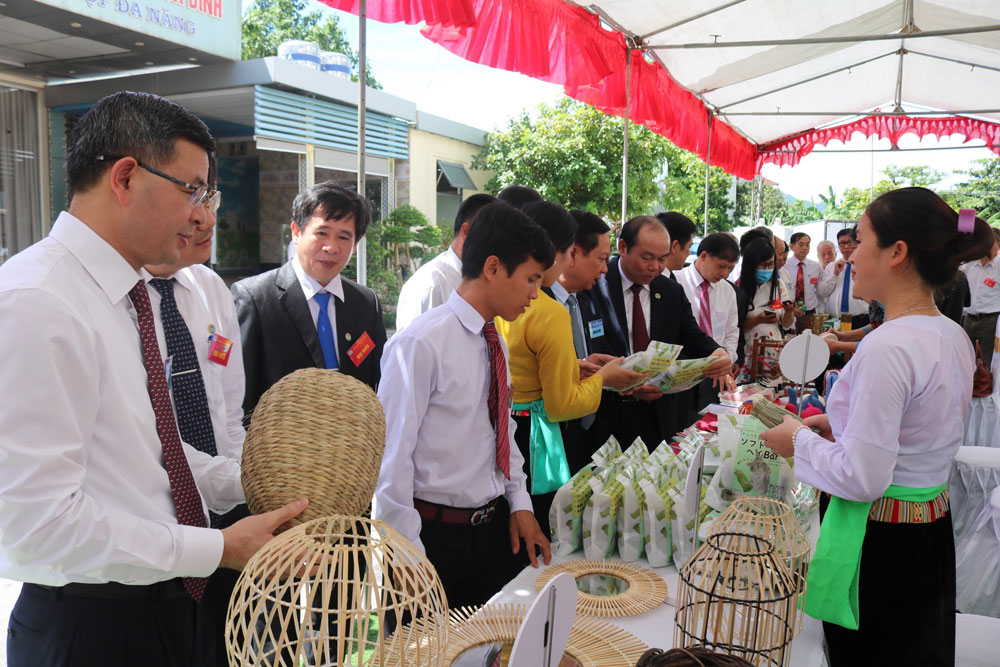
(HBO) – A programme on cooperative development for 2015 – 2020 has become a driving force behind the growth of collective economy in Hoa Binh. Via the State’s assistance for their personnel training, trade promotion, and infrastructure investment, the capacity of local cooperatives has been improved significantly. In line with market demand, they have built long-term business strategies and focused on infrastructure development, trademark building, technological application in production, and the formation of distribution links, among others.
 Thanks
to product diversity, revenues of local cooperatives are on the rise.
Thanks
to product diversity, revenues of local cooperatives are on the rise.
In the 2015 – 2020 period, Hoa Binh saw the
establishment of 117 cooperative groups, 297 cooperatives, and one cooperative
association. Meanwhile, 172 cooperatives were dissolved and 53 others were transformed
into cooperative groups and businesses under the 2012 Law on Cooperatives. Local
cooperatives have step by step reformed their operations and grown in scale and
revenues. The cooperatives paid attention to investing in production technology
and equipment, market research, and actively participated in supply chains and the
One Commune One Product programme. As a result, many have been able to improve
productivity and product quality, create more jobs and increase income for
members.
Now, 65 percent of the local cooperatives
are ranked as "good”, 27 percent "average”, and only nine percent "weak”.
In 2020, the average revenue from goods and
services of local cooperatives stood at nearly 3.3 billion VND each, up 153.45
percent compared to 2015, with the average profit, labour income, and number of
members per cooperative increasing 27.57 percent, 60 percent, and 42.74 percent,
respectively, in the five-year period.
The workforce of local cooperative has
become younger, while the proportion of cooperative managers with high
qualifications has risen. By the end of 2020, there were 40.71 percent of
cooperative managers holding college degree, up 35.71 percent from 2015.
However, the local collective economy still
faces a series of shortcomings, including their small or micro scales, low
productivity and competitiveness, limited technological knowledge, and lacking
of capital.
In the 2021 – 2025 period, the collective
sector is expected to maintain an annual growth at between 10 and 15 percent,
with value chain linkages formation forecast to boom. It will continue to make
significant contributions to promoting socio-economic development, ensuring
security and social order, building new-style rural areas and sustainably
reducing poverty in Hoa Binh.
The collective economic sector,
particularly cooperatives, has a great demand for human resources with
technical expertise, new science and technology, trade promotion, and credit to
develop and expand production and business scale. Besides their own resources,
resources mobilised from the market and support from the State are much needed./.
The Standing Board of the Hoa Binh provincial Party Committee has agreed in principle on a proposal by the Standing Board of the Party Committee of Hoa Binh city to gather feedback on the city’s 1:2000 zoning plan, which forms part of its broader urban development strategy.
Hoa Binh province has made notable progress in public administration reform and digital government development, with the satisfaction index among citizens and businesses reaching over 84%, according to recent government evaluations.
Thanks to great efforts by local authorities in recent times, the governance and public administration performance of Mai Chau district has been significantly improved.
In the afternoon of June 6, the Party Committee, the People's Council, the People's Committee and the Fatherland Front of Lac Son district solemnly held a meeting to celebrate the 139th anniversary of the district's founding (1886–2025) and the 79th anniversary of the establishment of the district's Party Committee (1946–2025). There was the attendance of Mr. Bui Van Thang, the Vice Chairman of the Provincial People's Council; Mr. Quach Tat Liem, the Vice Chairman of the Provincial People's Committee; Ms. Dang Bich Ngoc, the Deputy Head of the National Assembly Delegation of the province; as well as the former leaders of the province and district through various periods, who are the natives of the district.
Implementing the Politburo’s Resolution No. 57-NQ/TW on breakthroughs in science – technology, innovation, and digital transformation is a golden opportunity for the northern mountainous province of Hoa Binh to renew growth model, improve competitive edge and shorten digital gap.
Resolution 57-NQ/TW, issued by the Politburo on December 22, 2024, identifies sci-tech, innovation, and digital transformation as strategic breakthroughs to build a developed and prosperous nation. In Hoa Binh province, this spirit is not just a slogan, it’s being put into action through concrete initiatives that form a "new development triangle”: digital citizenship, digital economy, and digital administration.



 Thanks
to product diversity, revenues of local cooperatives are on the rise.
Thanks
to product diversity, revenues of local cooperatives are on the rise.